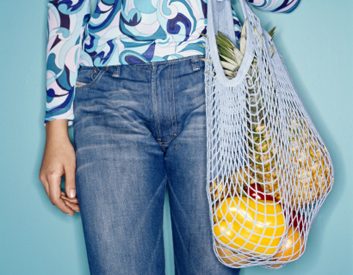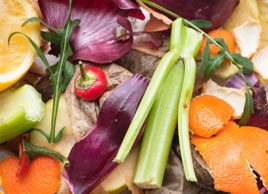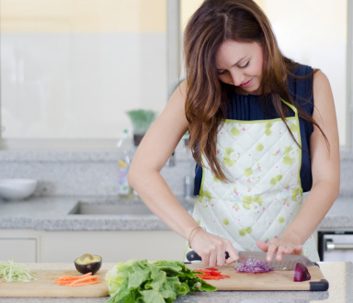
How food gets wasted
We’ve all done it: purchased a bunch of fresh basil or cilantro for a recipe, then used just a handful. The rest sits in the bottom of the fridge, only to get thrown out at the end of the week (or month) when it’s become tired, wilted or worse. Oh well, what’s one bunch of herbs?
But if that happens with several ingredients each week, you’re throwing out a lot of nutritious and valuable food-and, of course, wasting money. “We estimate that Canadian households throw out $13.4 billion worth of food each year,” says Martin Gooch, director of the Value Chain Management Centre, a food industry consulting group based in Guelph, Ont. “This is a massive amount of largely unnecessary waste that negatively impacts the economy and the environment.”
Of course, don’t let potential food waste stop you from buying fresh food. A few simple changes can help make sure that virtually nothing gets thrown out at your house-your health and your wallet will both benefit.

Buy one third less
One of the best ways to reduce the amount of food you waste is to avoid the problem in the first place. Whether it’s caused by overestimating how much you’ll eat, or getting carried away by the variety you find at the grocery store, if you’re throwing out a lot of fresh produce each week, you’re buying too much.
Part of the solution is to recalibrate your sense of how much food you need. Try making a conscious effort to buy one third less food each week. At first, you might be aghast at how empty your shopping cart looks, but this new approach will help ensure that not much is wasted.
It’s also useful to buy just enough fresh produce to get through the first half of the week and buy longer-life ingredients for your pantry (such as canned tomatoes) and for your freezer (such as frozen fruit and vegetables). This is particularly useful if your weekly meal routine is uncertain. You’re more likely to use up the smaller amount of fresh produce, and you have good food on hand in the pantry or freezer for the rest of the week if needed.

Alter the amount you use in recipes
When it comes to vegetables, many recipes seem to use only small amounts: a few tablespoons of fresh herbs, a cup or two of fresh spinach, a piece of butternut squash, half a head of broccoli. This means you are constantly left with unused bits and pieces. In many recipes, you can simply ignore these amounts, using handfuls of herbs, adding a whole broccoli instead of half, or even doubling the recipe and freezing the extra.
Conversely, you can reduce the amount of rice, pasta and meat you cook, to lessen the possibility of wasteful leftovers sitting in the back of your fridge.

Be adaptable
It’s easy to get caught up in feeling that you have to follow a recipe exactly, buying ingredients you know you won’t use again. But it can be just as easy to adapt the recipe to suit the contents of your fridge and pantry. If the recipe calls for fresh basil, parsley and oregano, for example, and you have only parsley and dried oregano, then use those-but more of them.
If you’re missing a specified ingredient, see if you have something similar and use that. For a recipe that calls for Swiss chard, you could use greens you have in the fridge already, such as spinach, arugula, kale or even fresh herbs.

Have go-to recipes for odds and ends
Having a couple of flexible recipes in your cooking repertoire means you’re more likely to use up leftovers. Some dishes are made for using up those extra bits. Soup can be made with leftover vegetables, fresh herbs, dried spices, bits of bacon and other meat, cooked rice and pasta, and partial cans of black beans, kidney beans or lentils. You can even freeze partial cans of beans for when you need them; just transfer to a covered container or freezer bag.
A frittata is another easy meal that’s perfect for using lots of odds and ends. Cooked or raw vegetables, ends of cheese, bits of meat, olives, fresh herbs, cooked potatoes or rice-any of these can be put into an egg frittata to produce a delicious, filling and healthy meal.
Related:
• 10 ways to reduce kitchen waste
• 11 ways to use fresh herbs
• 5 ways to waste less food
